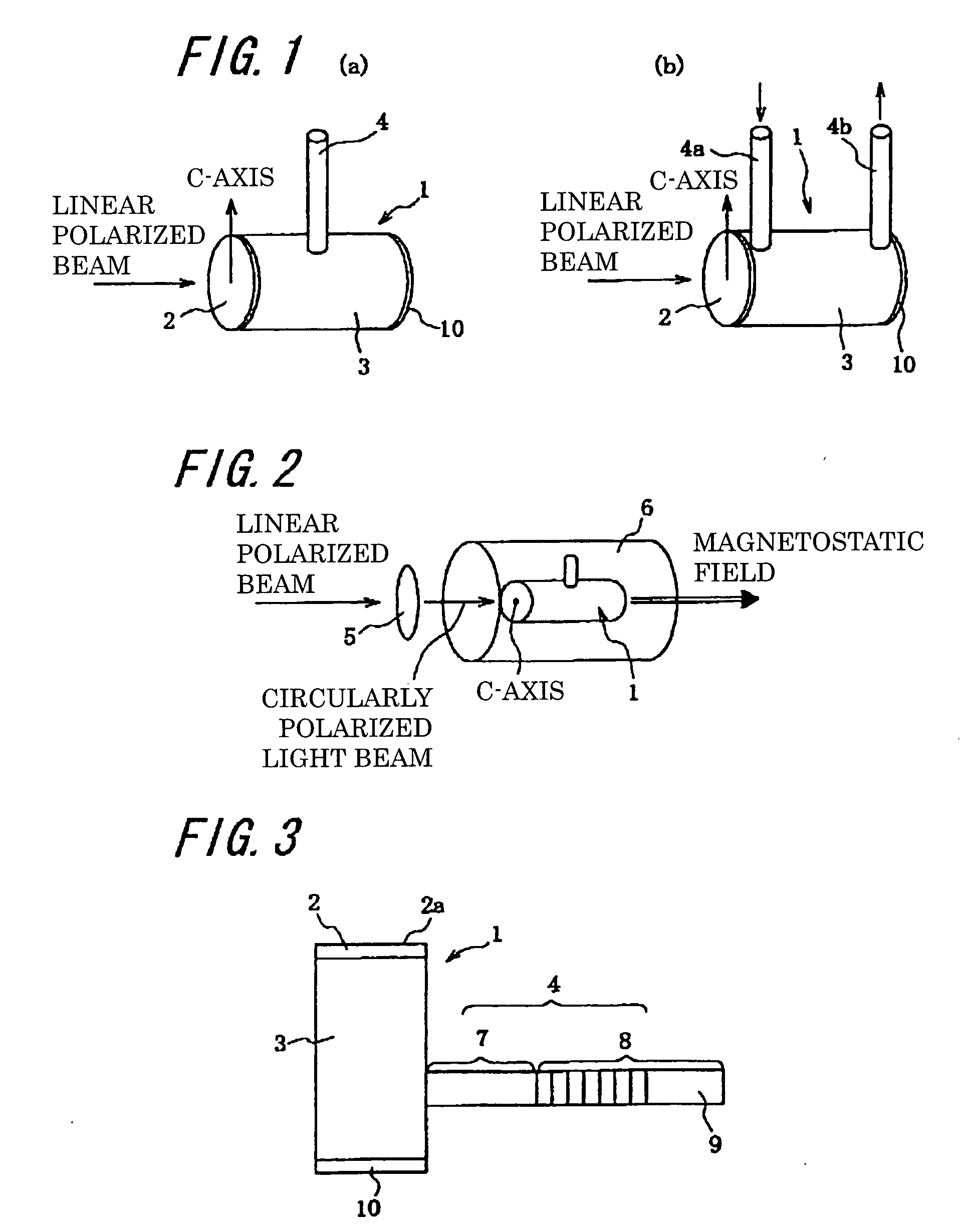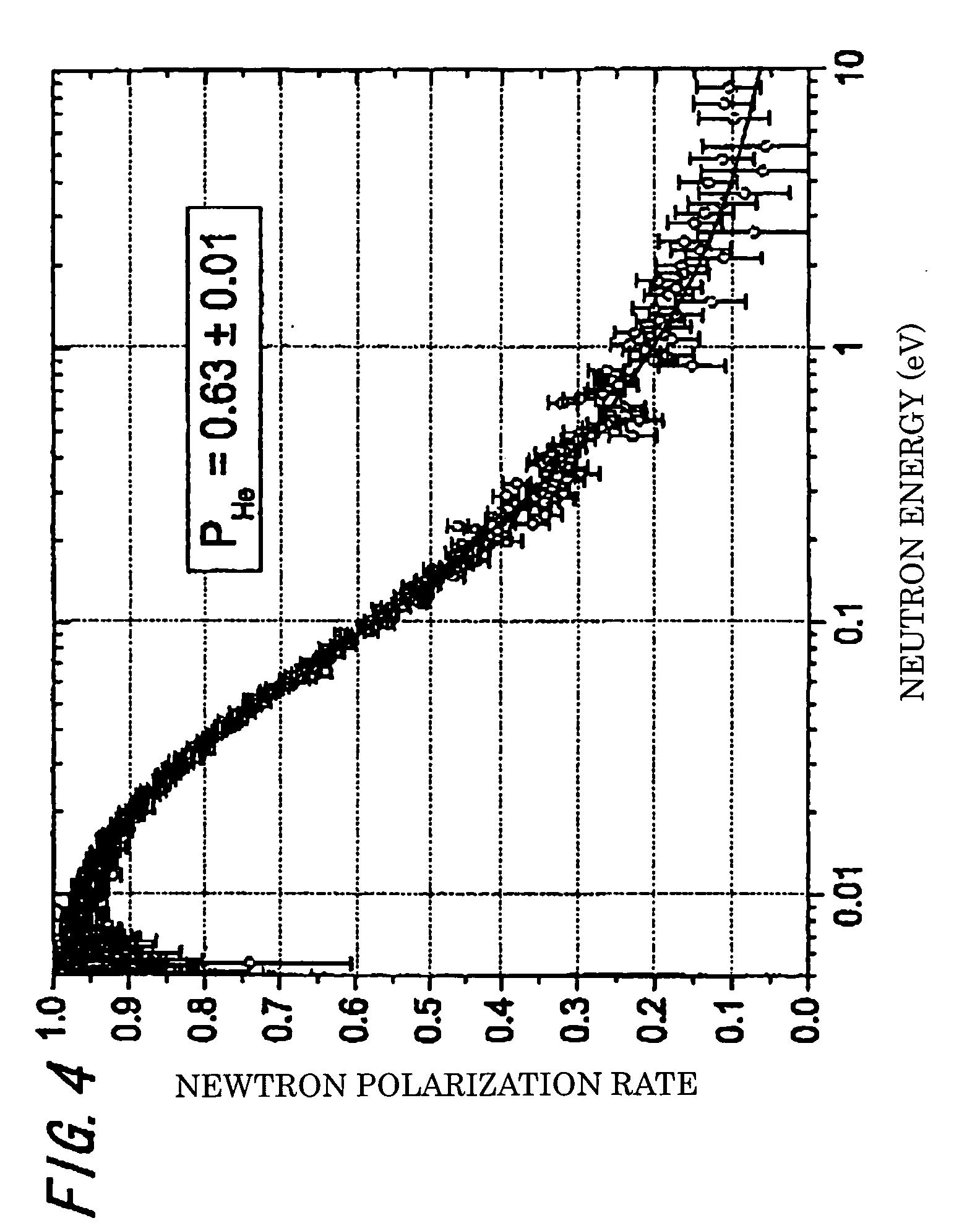Vessel for Rare Gas Filling, and Method for Polarization of Rare Gas Atomic Nucleus Using Said Vessel
a rare gas and atomic nucleus technology, applied in the field of rare gas filling vessels, can solve the problems of low detection sensitivity, low hydrogen density, and difficult application to an organ such as the lung, and achieve the effects of high polarization in the vessel, reduced light polarization, and reduced polarization
- Summary
- Abstract
- Description
- Claims
- Application Information
AI Technical Summary
Benefits of technology
Problems solved by technology
Method used
Image
Examples
example 1
[0062]The vessel 1 for rare gas filling of the present invention is a colorless transparent vessel of single crystal material such as colorless, transparent birefringent sapphire or quartz, which is filled with a rare gas of 1-10 atmosphere and an alkali metal of 1 mg-1 g. For example, the vessel comprises a 30-100 mm long cylindrical vessel body 3, two flat plates, e.g. two 1-5 mm thick and 30-100 mm diam disks, which are welded to both ends of the vessel body by a thermal diffusion method as light incident windows 2 and 10, and a pipe 4 for rare gas and alkali metal filling, which is also welded on the vessel body 3 or the one of the flat plates. The filling pipe 4 is fabricated by welding together the first pipe part 7 of sapphire and the second pipe part 8 of a plurality (5 to 8 kinds) of glass materials, which has a tip part 9 of Pyrex glass so that it can be connected to a vacuum apparatus or a rare gas and alkali metal filling apparatus. The tip part can be melted and closed ...
example 2
[0066]FIG. 2 shows an example of the alkali metal and rare gas nuclear polarization. For the alkali metal atomic or rare gas nuclear polarization, linearly polarized light from a diode laser or the like is transformed to circularly polarized light by means of a ¼ wavelength plate, and then enters a single crystal vessel filled with a rare gas and an alkali metal. The vessel is placed in the heating furnace (oven) 6 for alkali metal vaporization where a homogenous magnetic field of about 10 G is applied. The temperature of the oven 6 is about 200° C. The thickness and the crystal axis orientation of the window 2 of singe crystal material are adjusted so that the circularly polarization is held in the vessel. For example, as shown in FIG. 2, the circular polarization is held in the vessel, if the c-axis is perpendicular to the light incident plane 2a. When the c-axis is parallel to the light incident plane 2a, the circular polarization is restored, if the thickness is adjusted so that...
example 3
[0068]Here, it is shown that a high circular polarization for incident laser light is obtained in the vessel of the present invention, and then a high rare gas nuclear polarization is obtained. Rare-gas nuclear polarization P, is measured by means of neutron transmission T. The neutron transmission of the rare gas, which include the effect of the vessel, is represented as
T=Aexp(−σNd)cos h(PσNd).
Here, A is a neutron transmission of other materials such as vessel material and the like, except the rare gas, which is obtained from the experiment. Symbol σ is a neutron cross section of rare-gas nucleus, N the nuclear number density, and d a thickness of the rare gas along the neutron beam. When the nuclear spin is unpolarized, P=0, transmission T0 becomes
T0=Aexp(−σNd).
Since σ is obtained from a nuclear data table, the product of N and d is obtained from the neutron transmission. As a result, the nuclear polarization P is obtained from the measurement of T and T0 by using the following eq...
PUM
| Property | Measurement | Unit |
|---|---|---|
| Angle | aaaaa | aaaaa |
| Thickness | aaaaa | aaaaa |
| Magnetic field | aaaaa | aaaaa |
Abstract
Description
Claims
Application Information
 Login to View More
Login to View More - R&D
- Intellectual Property
- Life Sciences
- Materials
- Tech Scout
- Unparalleled Data Quality
- Higher Quality Content
- 60% Fewer Hallucinations
Browse by: Latest US Patents, China's latest patents, Technical Efficacy Thesaurus, Application Domain, Technology Topic, Popular Technical Reports.
© 2025 PatSnap. All rights reserved.Legal|Privacy policy|Modern Slavery Act Transparency Statement|Sitemap|About US| Contact US: help@patsnap.com



